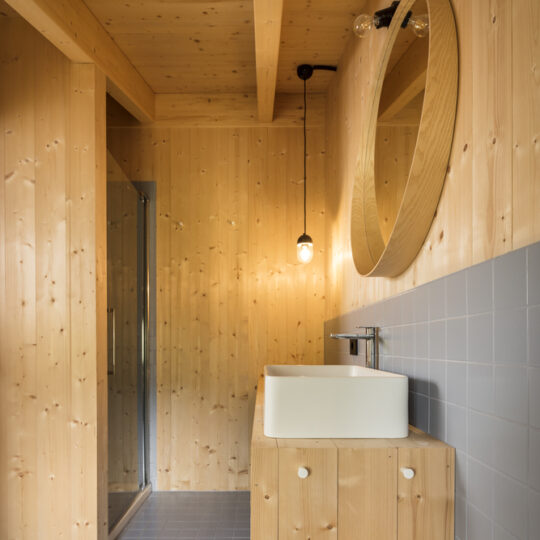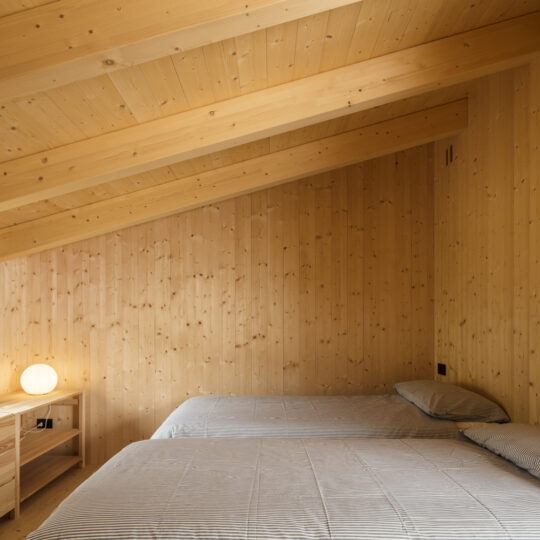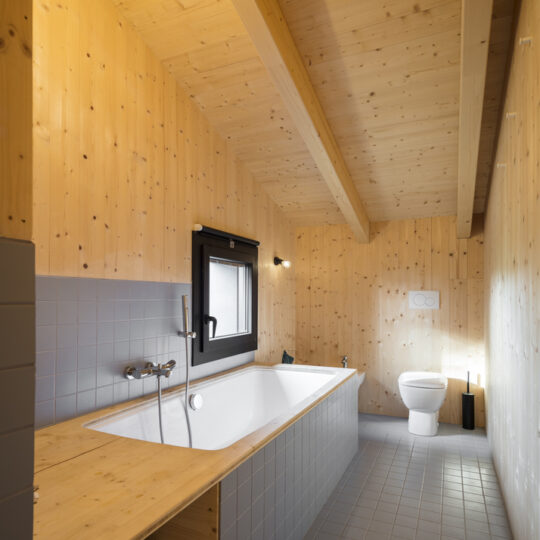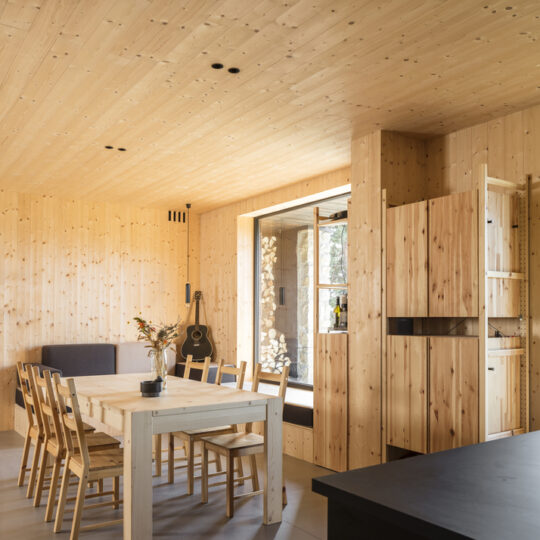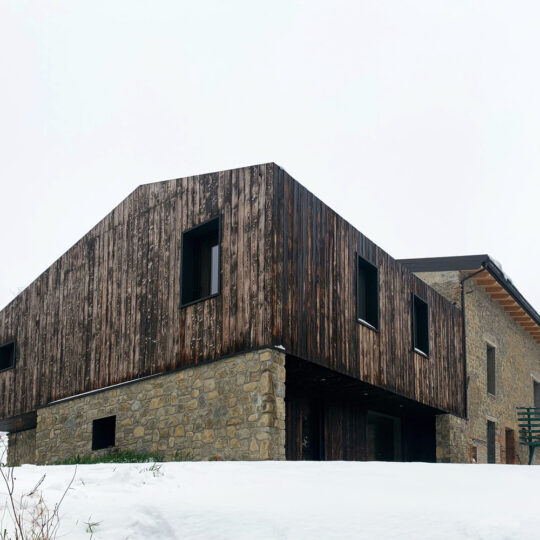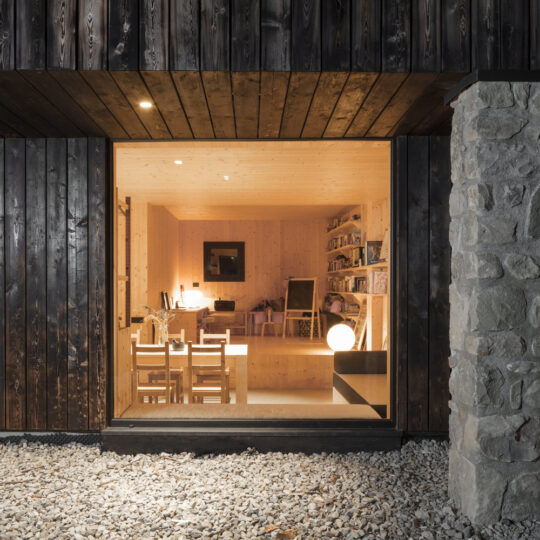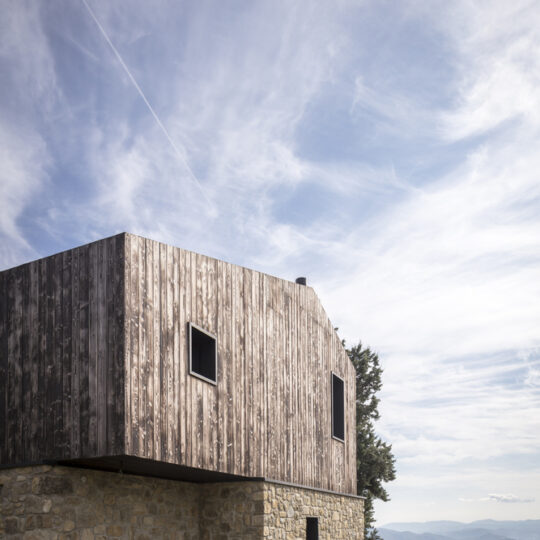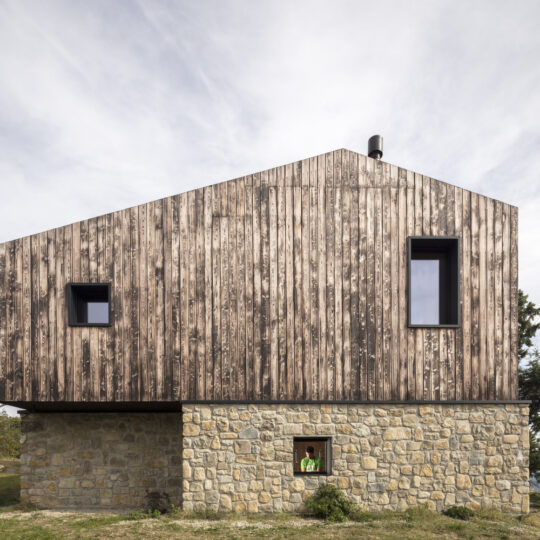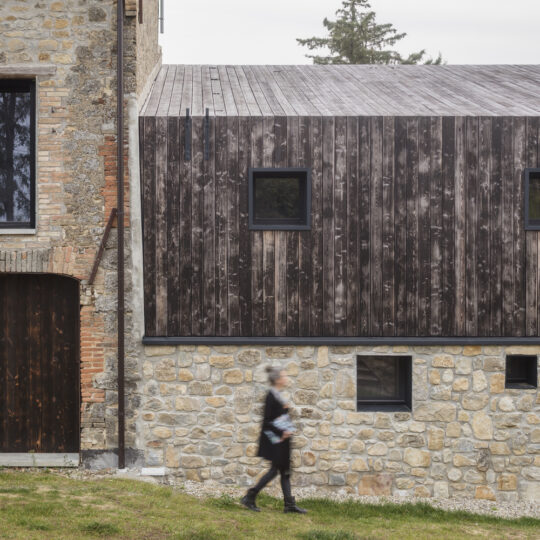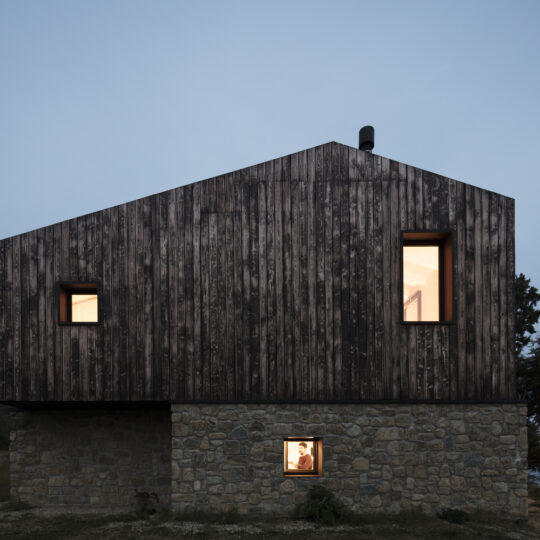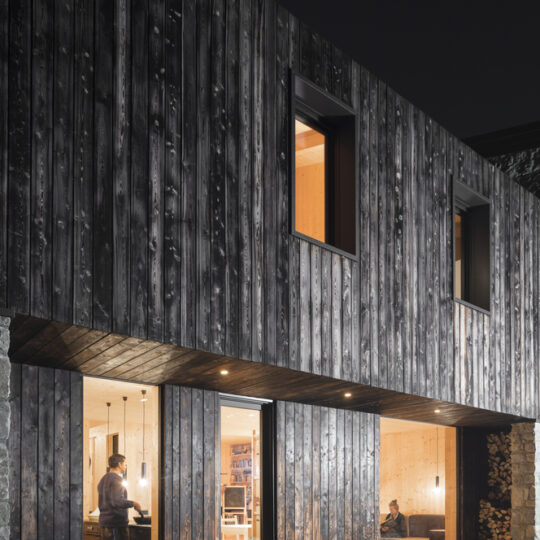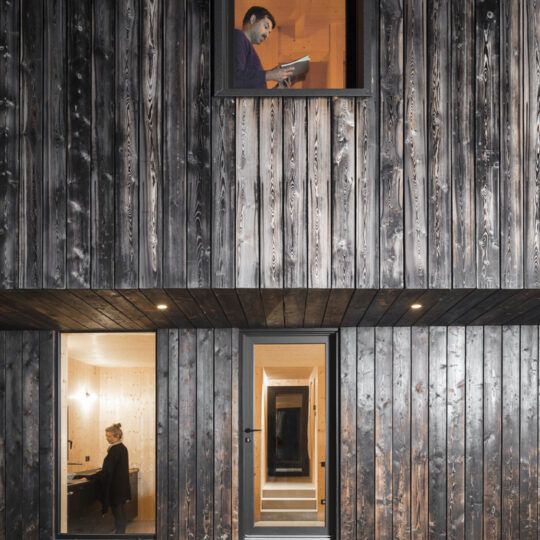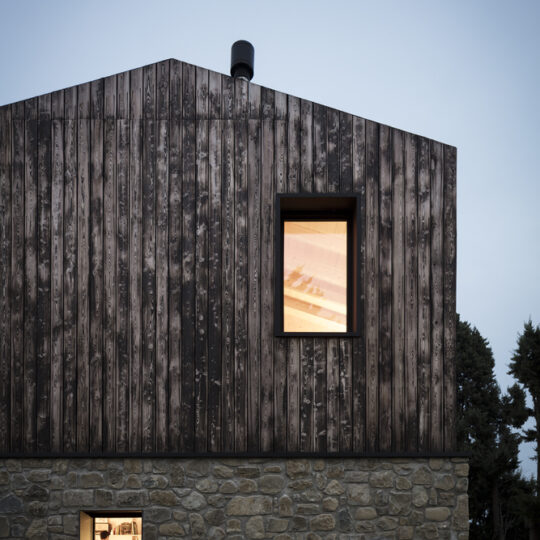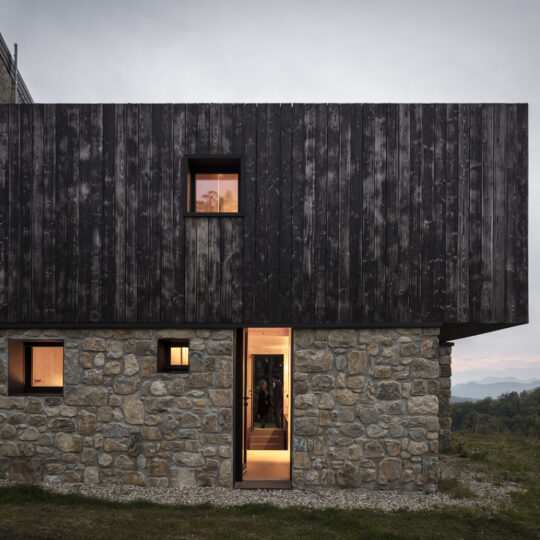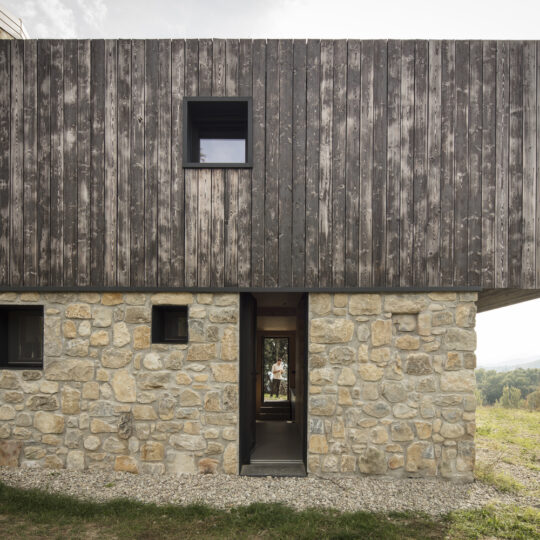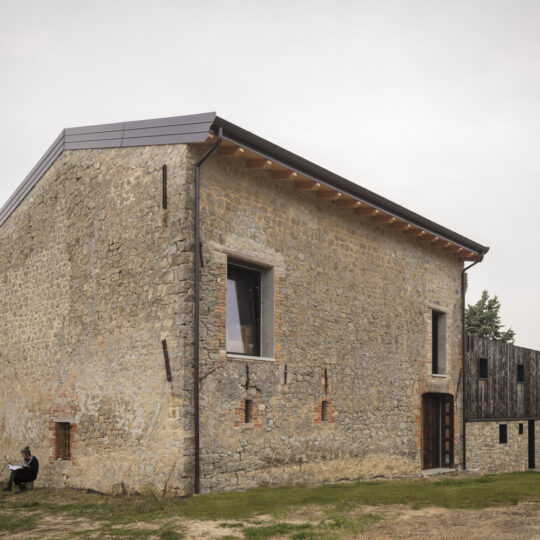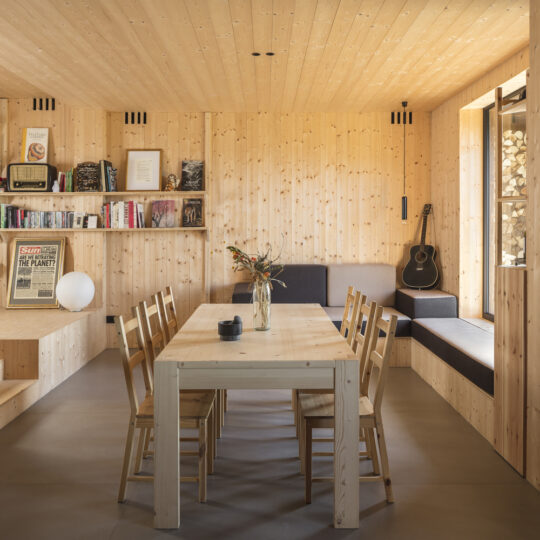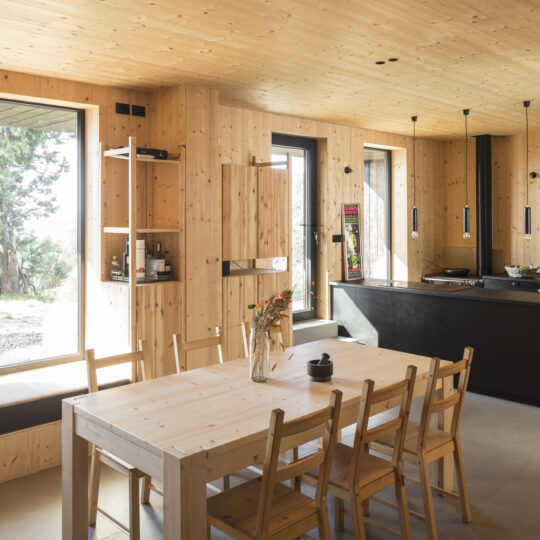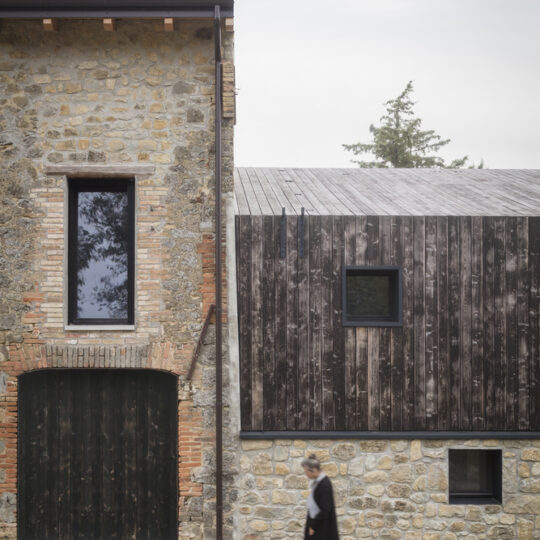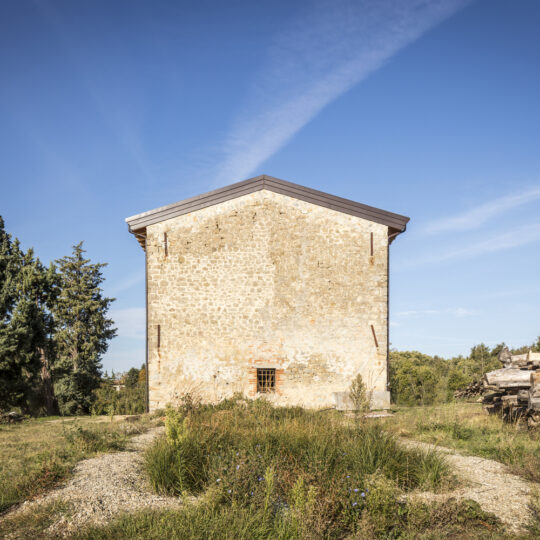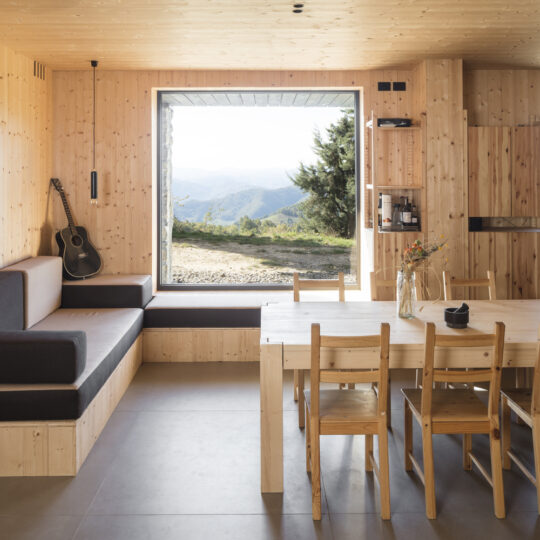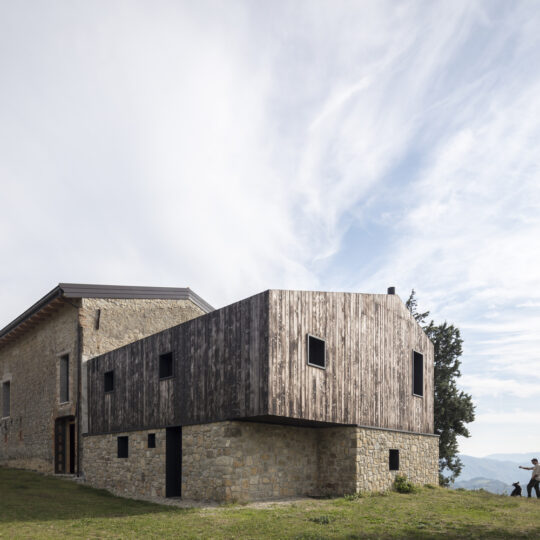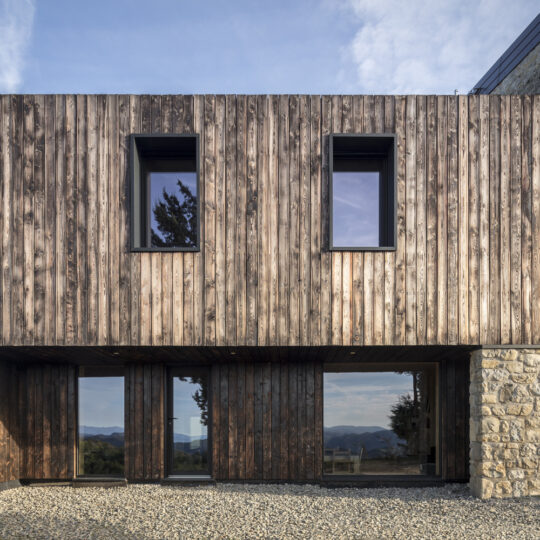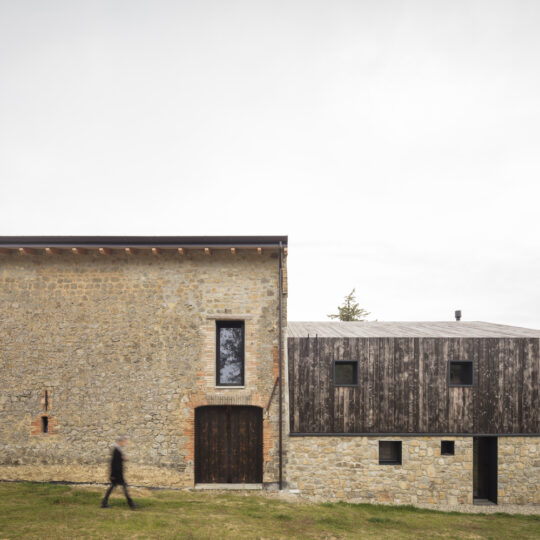For the restoration project completed in Marzabotto, an Italian town near Bologna, the architects of Ciclostile Architettura have chosen an evocative name: Ca’ Inua, that is a reference to Kainua, the ancient Etruscan city in the area, but also to the typical toponyms of mountain farmhouses; finally, Inua is an Inuit language word that means “the essence of all things”, a spiritual concept that unites all beings and that is the principle of harmony between the living.
The new construction is a volume in stone and wood that has its roots in the mountain with which it forms a whole; consequently, the new building presents itself as a timeless object, one of the elements of the natural landscape.
The house and workspace of the artistic duo Panem et Circenses, obtained from the demolition and reconstruction of the old farmer’s house, develops on two levels, the ground floor is partially embedded in the ground to strengthen this building/nature link; a graft that changes internal/external perception by bringing the gaze line closer to the ground.
The new stone wall on the ground floor (rebuilt on the footprint of the old wall) is a connecting element between the new house and the renovated barn: in fact, the new portion, with the structure in X-LAM panels, overlooks the main front only on the first floor, gracefully inserting itself in a strongly connoted landscape.
The covering is in burnt wood, a technique inextricably linked to the territory but projected everywhere, while internally the dialectic between “hard” surfaces (the concrete of the basement portion of the living area, the mosaics of the bathrooms) and “soft” surfaces (fir wood used as floors and coverings) recalls the essentiality and austerity of the place.
The internal distribution is dictated by the reading of the place and its intrinsic characteristics: the service rooms are all located on the north front and have small windows while in the south the living area/kitchen on the ground floor and the bedrooms on the upper floor have large openings.
The openings on the ground floor are simply shielded by the overhang of the first floor while those in the bedrooms are equipped with a shielding system; these openings, in addition to maximizing the energy supply in the cold seasons and preventing direct radiation in the hot ones, offer a breathtaking view of the valley.
The whole house is insulated with a very thick wood fiber coat that allows us to use as heating / cooling only an air system powered mostly by photovoltaic panels located on the roof of the barn to mitigate its visual impact; rainwater is collected in tanks and reused for watering the fields while the purification plant consists of a phytodepuration that works thanks to two ponds adjacent to the house.
Finally, the barn has been renovated with mainly structural interventions and equipped with all the basic plant equipment; today it is used as a warehouse for agricultural activities, over time a receptive structure will be created to welcome visitors.


